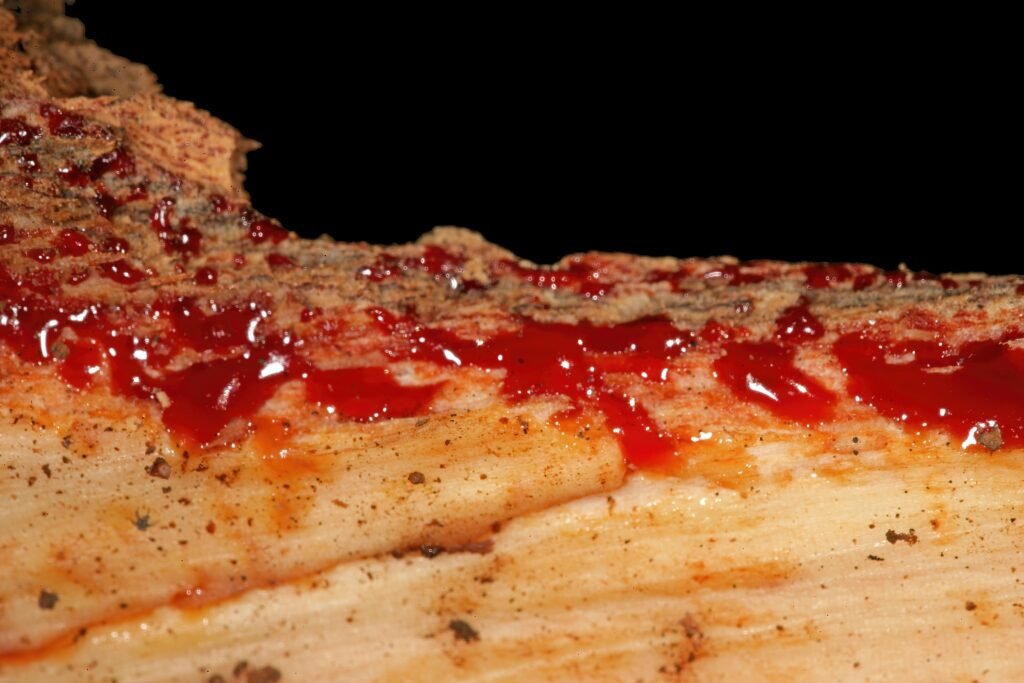Picture this: you’re walking through a quiet forest and suddenly spot a tree, its bark gashed, oozing what looks like thick, red blood. For a moment, you might wonder if you’ve stumbled onto the set of a supernatural thriller. But this striking phenomenon is all too real in the natural world. Some plants truly “bleed” red when wounded, their sap trickling out like nature’s own lifeblood. What causes these trees to weep such vivid crimson? Is it just a quirk of chemistry, or is there a deeper evolutionary tale at play? For centuries, these bleeding trees have inspired myths, medicine, and scientific curiosity. Let’s dive into the heart of these mysterious trees and uncover why some plants bleed red.
The Strange Beauty of Crimson Sap

Crimson sap is undeniably captivating. When sunlight hits the sticky droplets, it glows like rubies against rough bark, creating a scene both eerie and beautiful. Unlike the clear or milky sap of most trees, red sap stands out, demanding attention. This visual drama has drawn the eyes of poets, scientists, and curious wanderers for generations. In many cultures, the sight of red sap is woven into legends about trees possessing souls or magical powers. The bold color is more than just a spectacle—it’s a living signal, hinting at hidden secrets within the plant’s biology. Witnessing a tree bleed red is a reminder that the natural world often defies our expectations in the most dramatic ways.
What Exactly Is Sap?

To understand why some trees bleed red, it helps to know what sap really is. Sap is the lifeblood of a plant, transporting water, nutrients, and sugars through intricate networks inside stems and trunks. Think of it as the plant’s internal delivery service, carrying essential supplies from roots to leaves and back again. There are two main types: xylem sap, which moves water and minerals upward, and phloem sap, which distributes sugars made during photosynthesis. Usually, sap is clear, amber, or milky white. So when it appears red, something unusual is happening inside the plant’s veins. The unique chemistry behind this transformation is what sets bleeding trees apart from their green, oozeless neighbors.
The Chemistry Behind the Color
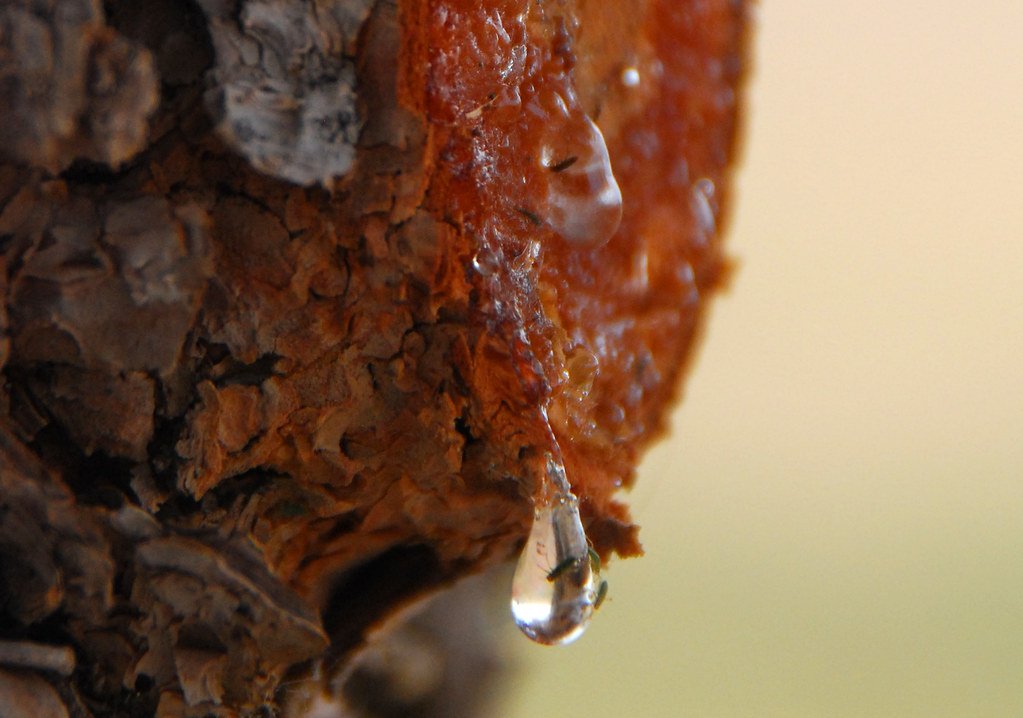
The secret to red sap lies in a fascinating blend of plant chemistry. Certain trees produce pigments—molecules that color the sap with vivid reds or deep oranges. The most common culprits are anthocyanins and tannins, compounds also found in red wine and autumn leaves. When a tree is injured, these pigments mix with the sap and flow out of the wound, creating the look of bleeding. But pigments alone don’t tell the whole story. Sometimes, the sap’s red hue comes from unique resins or latexes, packed with a cocktail of defensive chemicals. This complex chemistry not only creates stunning visuals but also plays a key role in the plant’s survival strategy.
Dragon’s Blood: The Legendary Bleeding Tree
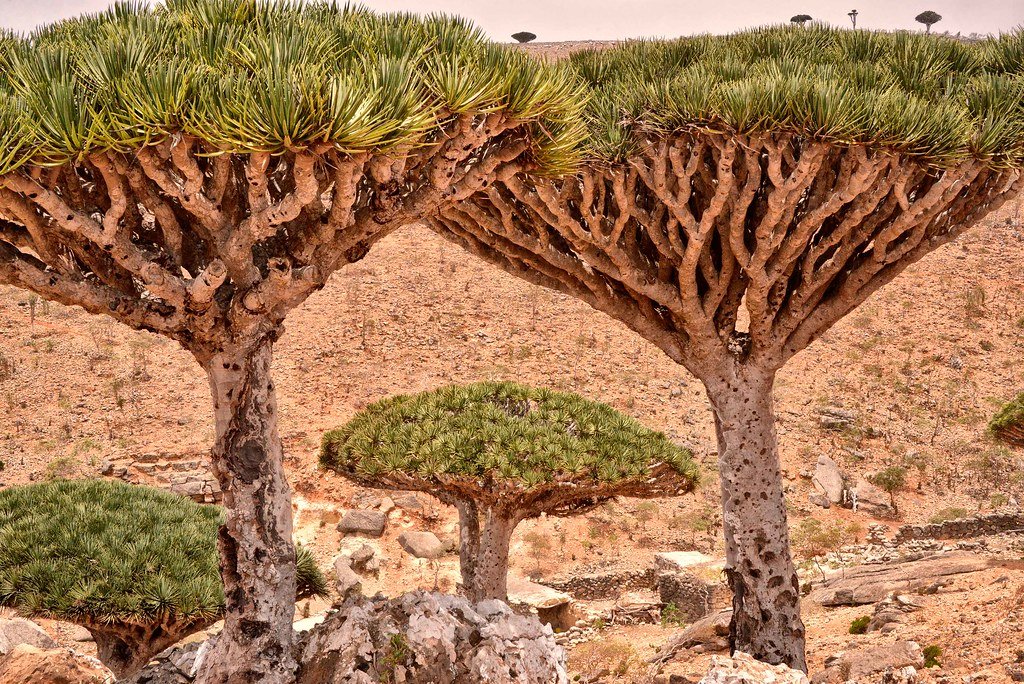
Few trees have captured the imagination quite like those that produce “dragon’s blood”—a striking, blood-red resin. The Socotra dragon tree (Dracaena cinnabari) is perhaps the most famous, growing on the remote island of Socotra in Yemen. When its bark is cut, the tree releases thick, red resin that has been used for centuries as dye, medicine, and even incense. Ancient peoples believed dragon’s blood held mystical powers, able to heal wounds or ward off evil spirits. Today, scientists know that this crimson sap is rich in protective compounds that help the tree seal its wounds and deter hungry insects. The legend of dragon’s blood is a testament to how natural phenomena can blur the line between science and myth.
African Bloodwood: The Tree That Truly Bleeds
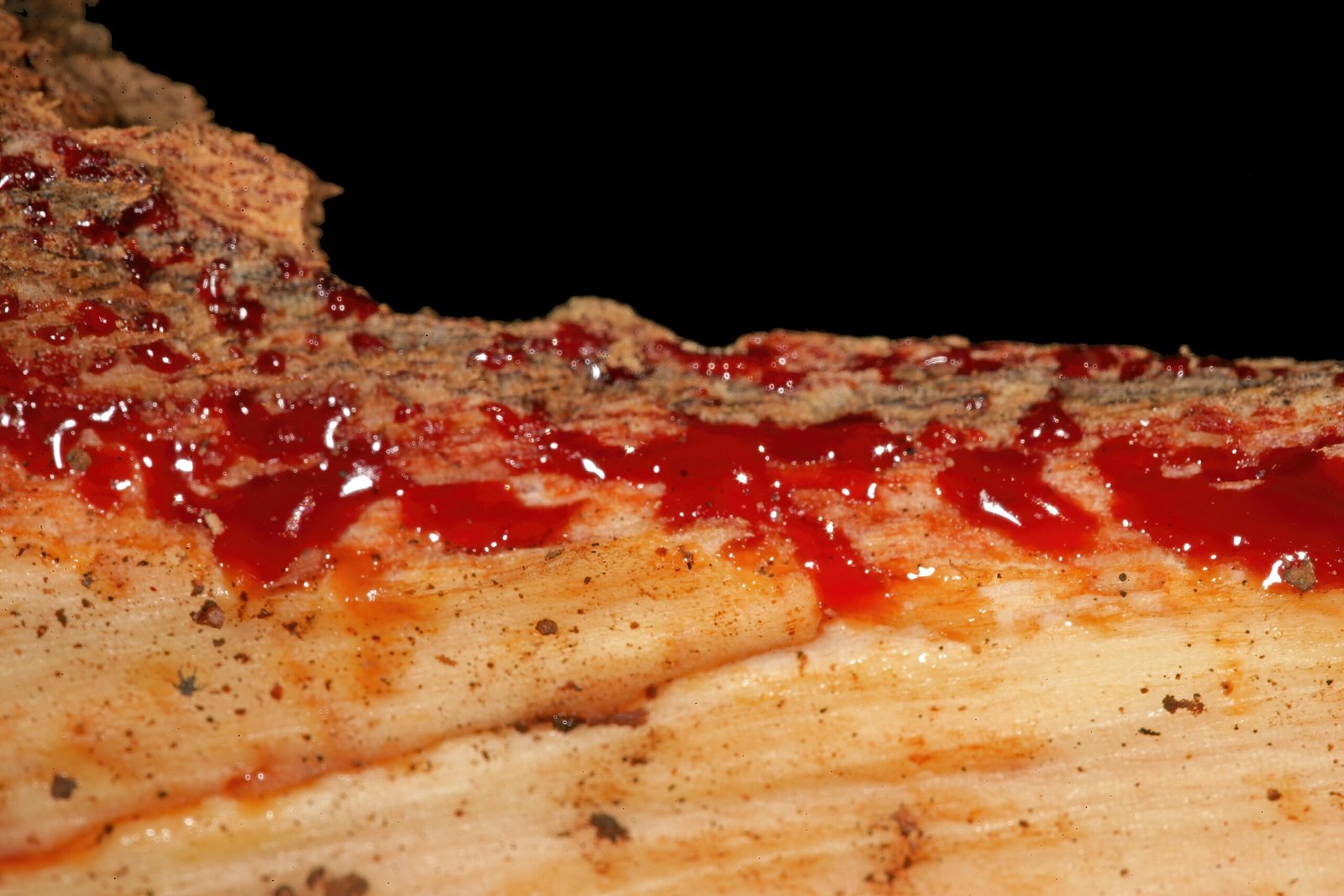
Deep in Africa’s forests, the bloodwood tree (Pterocarpus angolensis) draws attention with its startling red sap. When cut, the tree weeps a thick, blood-like liquid that can pool on the forest floor. Locals have long used bloodwood sap in traditional medicine, believing it can treat everything from malaria to wounds. The sap’s color comes from a mix of tannins and special phenolic compounds that protect the tree from bacteria and fungi. For the bloodwood, bleeding red is not just for show—it’s an evolved defense system that helps the tree heal quickly and stay alive in harsh environments.
Why Do Some Trees Need Red Sap?
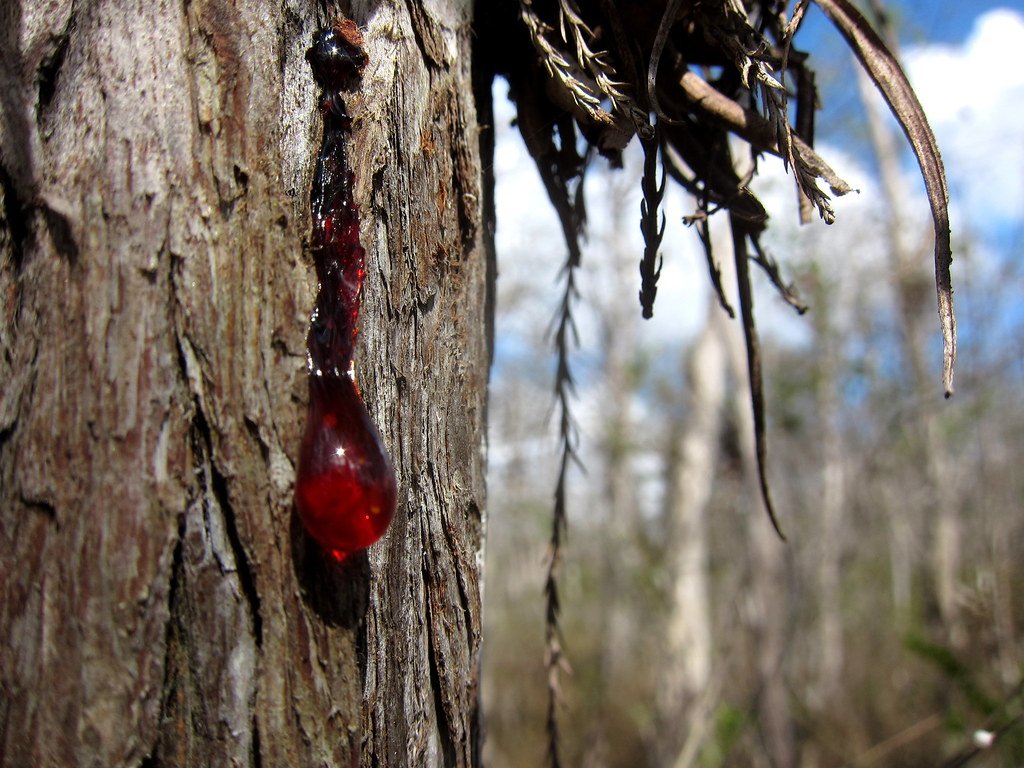
Red sap is more than a botanical oddity; it serves a powerful purpose. When a tree is injured, pathogens and insects rush to exploit the wound. The red pigments and chemicals in the sap act like a natural bandage, sealing the cut and creating a toxic barrier against invaders. In some species, these compounds are so bitter or astringent that animals learn to avoid feeding on the tree. This adaptation offers a double benefit: it protects the tree from infection and discourages further attacks. The vivid color might even warn would-be grazers, much like the bright markings on poisonous frogs signal danger.
Blood as a Warning: The Power of Color
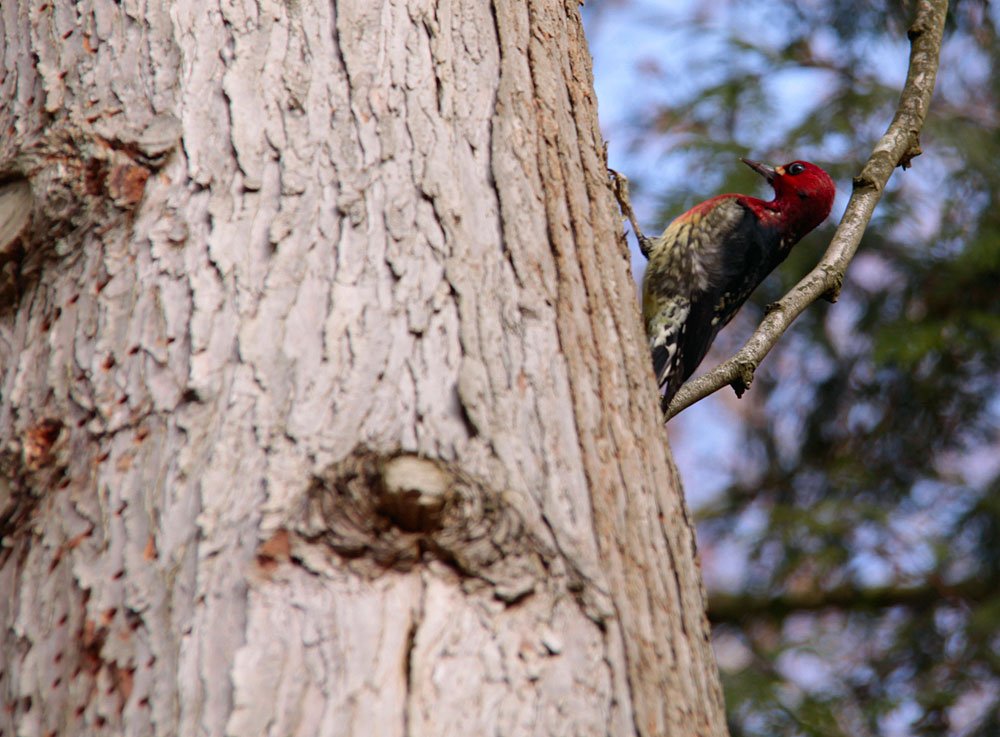
Color in nature often sends strong messages. Just as the red of a snake’s scales can warn predators to stay away, crimson sap may serve as a visual deterrent. Many animals associate red with danger or toxicity, and the same logic might apply to bleeding trees. By advertising their chemical defenses with such a dramatic color, these plants could be saying, “Don’t mess with me.” This warning system is a clever evolutionary trick, reducing the risk of repeated attacks and helping the tree conserve precious resources for growth and reproduction.
Rainforest Oddities: The Red Milk Tree
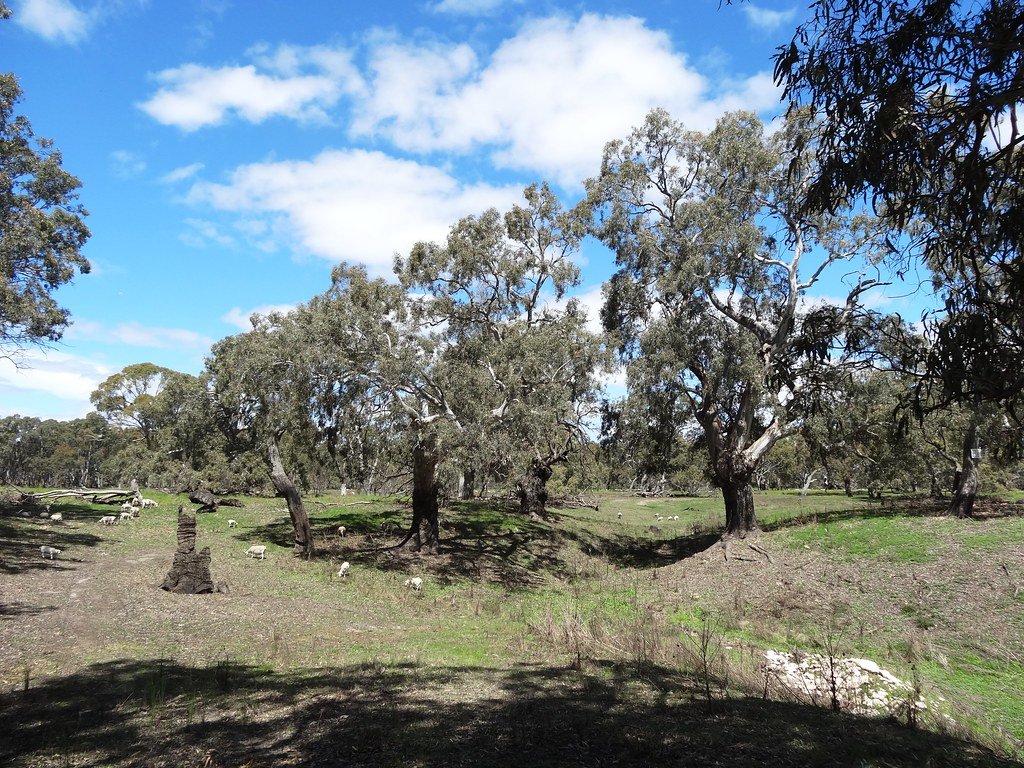
In the dense rainforests of South America, another bleeding tree lurks: the red milk tree (Brosimum rubescens). Its sap flows scarlet when the bark is wounded, earning it a reputation as the “blood milk” tree among indigenous peoples. Craftsmen prize its richly colored wood, known as Satine or bloodwood, for its beauty and durability. The red sap contains rare flavonoids and latexes that protect the tree from insects and fungal decay. In the wild, a single cut can send red rivulets down the trunk, painting a vivid warning for all to see.
Australia’s Bloodwood Eucalyptus

Australia’s diverse forests are home to a group of eucalypt trees known as bloodwoods (Corymbia spp.). When injured, these trees ooze a deep red kino, a resin that hardens into glossy, protective scales. The color can be so intense that it looks like the tree is bleeding from its wounds. Aboriginal Australians have long used bloodwood kino as a traditional remedy for cuts, burns, and infections. The resin’s antimicrobial properties make it a potent natural bandage, helping both tree and human alike. The dramatic sap has become a symbol of the harsh but healing Australian landscape.
Medicinal Marvels: Healing Powers of Red Sap

Throughout history, people have turned to bleeding trees for their reputed healing abilities. The red sap of dragon’s blood and bloodwood trees has been used to treat wounds, stomach ailments, and even infections. Modern research is beginning to validate some of these uses, finding that the sap contains compounds with antibacterial, antiviral, and anti-inflammatory effects. In some cases, the sap helps wounds clot and heal faster—much like a real bandage. These discoveries highlight how ancient traditions often held kernels of scientific truth, hidden in plain sight among the trees.
Myths and Legends: The Soul of the Bleeding Tree

The sight of a tree bleeding red has inspired countless stories and superstitions. In some cultures, red sap is seen as the literal blood of the earth, a sign that trees possess spirits or souls. Myths tell of sacred trees that bleed when harmed, and some communities believe felling such a tree can bring bad luck or even disaster. These beliefs reflect a deep respect for nature’s mysteries, reminding us that the world is full of wonders we don’t fully understand. Even today, the bleeding tree is a powerful symbol of life, sacrifice, and resilience.
Fungi, Insects, and the Red Sap Connection

While sap is mostly about the tree’s own defenses, it can also influence the world around it. Some fungi and insects are drawn to the wounds, feeding on the sap or using it to lay eggs. Yet many are repelled by the bitterness and toxicity of red sap, which acts as a selective filter in the ecosystem. In rare cases, specialized beetles or moths have evolved to tolerate the chemicals, turning bleeding trees into unique microhabitats. The relationship between red sap and forest life is a complex dance—sometimes protective, sometimes inviting, always fascinating.
Climate and Environment: When Do Trees Bleed Most?
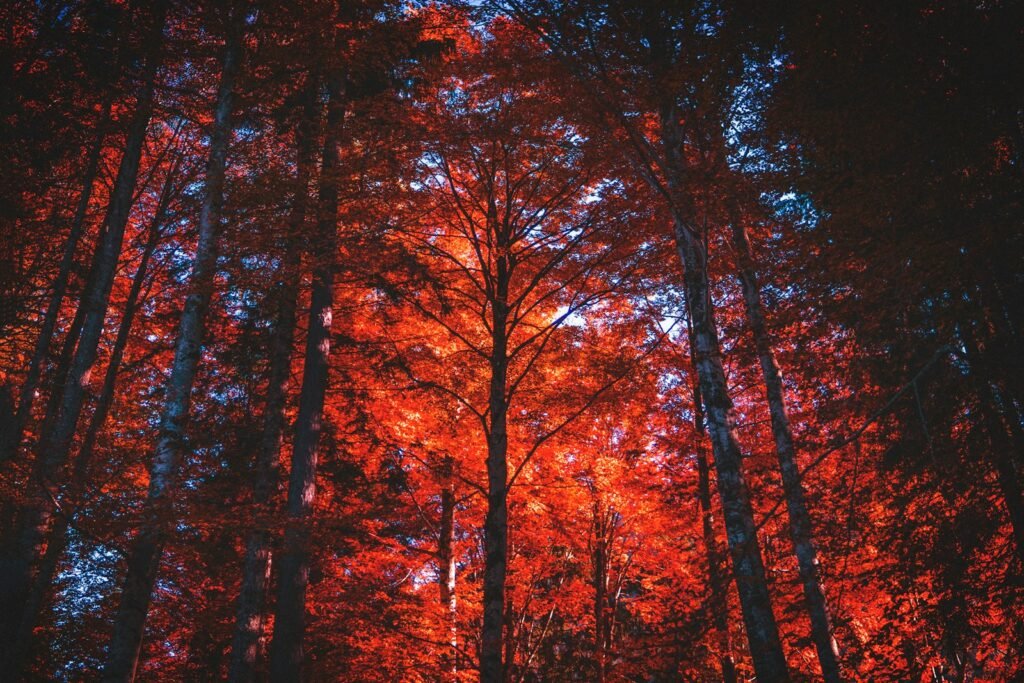
Environmental factors play a big role in when and why trees bleed red. Heavy rains, drought, or damage from storms can stress trees, making them more likely to ooze sap. In some species, bleeding is a seasonal event, tied to growth cycles or flowering periods. Human activity, like logging or road building, can also trigger massive sap flows. The amount and color of sap can even change with soil chemistry, temperature, and rainfall. This sensitivity means bleeding trees are often barometers of their local environment, signaling shifts in climate and health.
Red Sap in Art and Craft

The striking color of red sap hasn’t gone unnoticed by artists and craftsmen. In ancient times, dragon’s blood resin was used as a dye for fabrics, a pigment for paintings, and a varnish for violins. Bloodwood and red milk trees provided richly colored woods prized for furniture and sculpture. Even today, natural red dyes are valued for their vibrancy and eco-friendliness. The use of bleeding tree products in art is a testament to humanity’s enduring fascination with the colors and chemistry of the natural world.
Conservation: Protecting Bleeding Trees

Many bleeding tree species face threats from habitat destruction, overharvesting, and climate change. The Socotra dragon tree, for instance, is now endangered, its future uncertain as its island home changes. Conservationists are working to protect these botanical wonders, both for their ecological importance and cultural value. Red sap is more than a curiosity—it’s a sign of a healthy, functioning forest. Protecting bleeding trees means preserving the rich tapestry of life that depends on them, from insects to people.
Modern Science: Unlocking the Secrets of Red Sap

Today’s scientists are still unraveling the mysteries of red sap. Advanced chemical analysis reveals a treasure trove of unique molecules, some with potential for new medicines or industrial uses. Genetic studies are helping us understand how these trees evolved such striking defenses. The study of bleeding trees is a reminder that even the most familiar landscapes hide remarkable secrets, waiting for curious minds to explore. As research continues, new discoveries may change how we think about the boundaries between plant, animal, and environment.
A World of Wonder in Every Drop

The story of plants that bleed red sap is a vivid reminder of nature’s creativity and resilience. Each droplet tells a tale of survival, adaptation, and connection between living things. From ancient myths to cutting-edge science, bleeding trees stir the imagination and challenge our understanding of what it means to be alive. Next time you walk through a forest, keep an eye out for a flash of crimson on the bark—a sign that the world is full of surprises, just waiting to be discovered.

